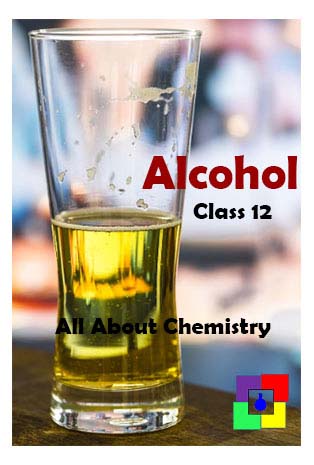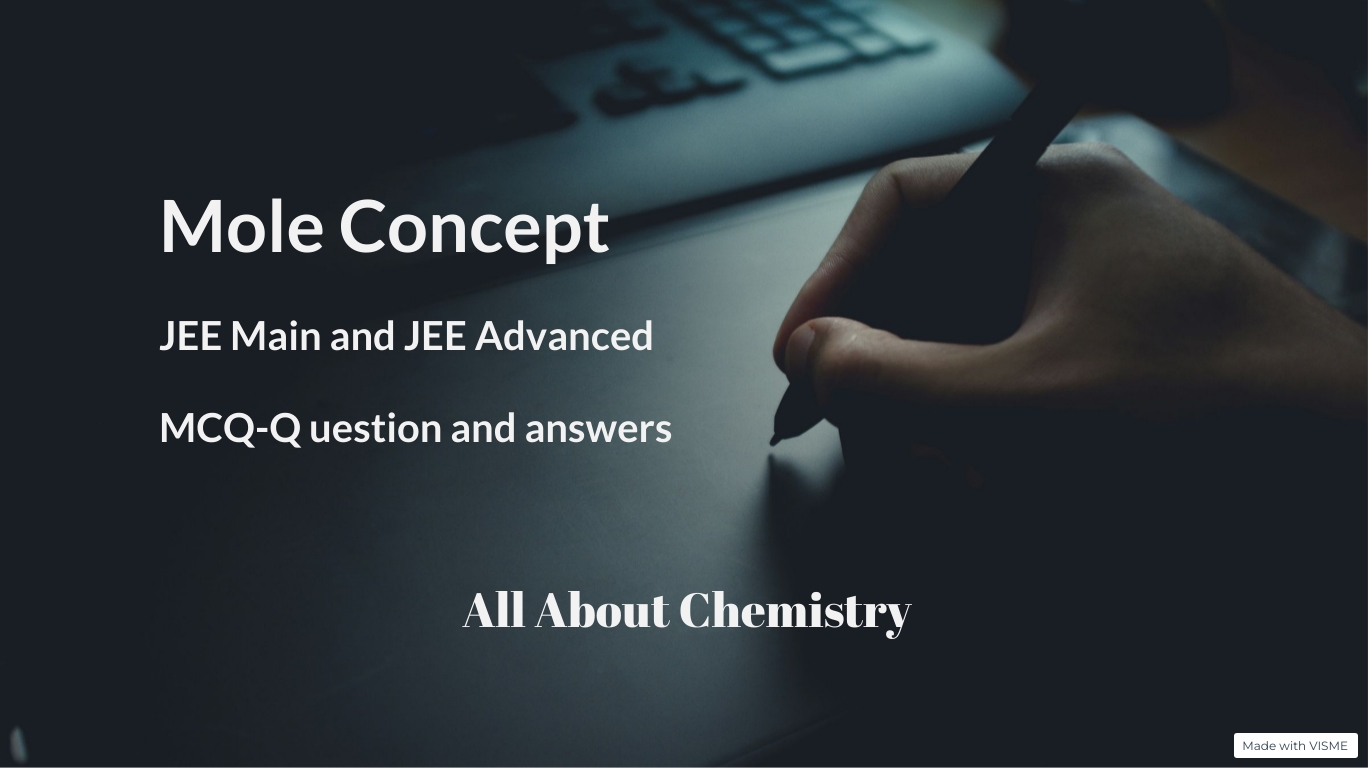Alcohols are organic compounds with -OH as the main functional group.In this post we will study about the classification, preparation and reactions of alcohol; preparations and reactions of phenol.
After completing this section don’t forget to complete the question answers and Practice Set of this chapter. The links are at the bottom.
Classification of Alcohols:
Monohydric alcohols:
Compounds which contain only one -OH group.

- If carbon which contains -OH group, also possesses 2 directly bonded H atom, it is called 10
- If carbon which contains -OH group, also possesses 1 directly bonded H atom, it is called 20
- If carbon which contains -OH group, also possesses no directly bonded H atom, it is called 30
Dihydric alcohols:
Compounds which contains two -OH groups.

Trihydric alcohols:
Compounds which contains three -OH groups.

Allylic alcohols:
If -OH group is present in the allylic position.(sp3 carbon attached to sp2 carbon)


Benzylic alcohols:
When -OH group is attached to the benzylic carbon (Ph-CH2-)

Phenols:
When -OH group is directly attached with Benzene group, it is called phenol.

Preparation of Alcohols
1.From alkenes:
Alkenes when reacted with concentrated sulphuric acid followed by water, alcohol is produced following Markownifoff’s Rule.


At first add +ve ion from the acid ion to that C atom which contain max no of H atom in a double bond. Then add the anion from the nucleophile.[From OH– and OD–, OD– always adds]
Special case:


2.From alkenes:
When alkenes are reacted with boron trihydride in Tetrahydrofuran media followed by alkaline oxidation by hydrogen peroxide, alcohol is produced following anti markownikoff’s rule.

My Suggestion: If you want to produce alcohol of lower degrees follow anti markownokoff’s rule. Propene when subjected to acidic hydrolysis, 2-Propanol is produced. But when treated with boron trihydride in Tetrahydrofuran media followed by alkaline oxidation by hydrogen peroxide, 1-Propanol is produced.
3. From alkyl halides:
Alkyl halides when reacted with Aq KOH or Aq NaOH or moist Ag2O , halogen is substituted with -OH group to produce alcohol.

- For a particular alkyl group, RCl <RBr< RI
- For a particular halogen atom, 30< 20< 10 [For SN2]
4.Reduction of aldehydes, ketones, acid, esters, acid halides:




Reducing agents:
- LiAlH4 and H3O+ – can be used in all cases
- Na/CH3CH2OH – can be used in all cases
- NaBH4/CH3CH2OH – can be used for ketone, aldehyde, and acid halide only
5.By Grignard:
Formaldehyde when treated with Grignard reagent followed by acidic hydrolysis, 10 alcohol is produced.

Aldehyde except for formaldehyde when treated with Grignard reagent followed by acidic hydrolysis, 20 alcohol is produced.

Ketone when treated with Grignard reagent followed by acidic hydrolysis, 30 alcohol is produced.

Acid chlorides and esters when treated with Grignard reagent followed by acidic hydrolysis, 30 alcohol is produced.

6.From amines:
Primary amines when treated with sodium nitrite and hydrochloric acid, -NH2 group get substituted with -OH group to produce alcohol.

7.From Ester
Esters when hydrolyzed, produce carboxylic acid and alcohol. The hydrolysis can be done in both acidic and alkaline medium. If hydolysis is done by NaOH solution, a sodium salt of carboxylic acid is produced. The sodium salt of higher carboxylic acid(fatty acid) is called soap. That’s why this reaction is called a saponification reaction.

Reactions of alcohol:
1.Preparation of sodium alkoxides:
Alcohol when reacted with metallic sodium, sodium alkoxide is produced along with hydrogen. This reaction proves the acidic nature of alcohol.

2.Preparations of alkanes:
Alcohol act as a proton donor. When grignard reagent react with alcohol, alkane is magnesium alkoxy halide is produced.

3.Preparation of esters:
Alcohol when warmed with carboxylic acid in presence of conc. sulphuric acid , produce ester and water. This process is called esterification reaction. Esters possess fruity smell.

4.Preparation of alkyl halides:
a)Alcohol when reacted with ZnCl2/HCl (Lucas Reagent), alkyl halide is produced.As alkyl halides are insoluble in water, turbidity is produced.
- 30 alcohol forms turbidity immediately
- 20 alcohol forms turbidity within 5 mins
- 10 alcohol forms turbidity shows no turbidity at room temperature.

b) Alkyl halides can also be produced from alcohol by PCl5 or PCl3 or SOCl2 . Thionyl chloride is preferred as it produce two gaseous side products, which can be removed easily.

5.Dehydration:
Alcohols when heated with conc.H2SO4 at 1700C alkene are produced by saytzeff’s rule.

6.Preparation of ethers:
Alcohols when heated with conc.H2SO4 at 1400C ethers are produced.

7.Oxidation:
- 10 alcohol when treated with Conc. H2SO4 /K2Cr2O7, carboxylic acid is produced. At first, aldehyde is produced, which further undergoes oxidation to produce carboxylic acid.
- 20 alcohol when treated with Conc. H2SO4 /K2Cr2O7, ketone is produced.
- 30 alcohol does not undergoe oxidation with Conc. H2SO4 /K2Cr2O7.

- When Jones Reagent is used, primary alcohol is partially oxidised to aldehyde.

Test for alcohol
Victor Meyer’s Test
Reagent reactant is treated with Red P + I2, then AgNO2 then NaNO2 + dil H2SO4, then NaOH
- 10alcohol →Blood Red
- 20alcohol →Blue
- 30alcohol →Colourless.

Interconversion of alcohols
1.Conversion of Lower to higher alcohol

2.Conversion of Higher to Lower alcohol

3.Conversion of Primary to secondary alcohol

4.Conversion of Secondary to Tertiary alcohol

5. Conversion of Primary to Tertiary alcohol

Phenol
Preparation of Phenol
1.From Benzene
Benzene when reacted with fuming sulphuric acid, produce benzenesulphonic acid. Benzenesulphonic acid when heated with NaOH, sodium phenoxide is produced, which on acidic hydrolysis produce phenol.

2.From Benzene diazonium chloride
Benzene diazonium chloride when treated with warm water, phenol is produced.

3.From chlorobenzene
Chlorobenzene when heated with sodium carbonate at 3000 C and 200 atm pressure in the presence of Catalyst, phenol is produced.

4.From Aniline

5.From phenyl magnesium bromide

6.From cumene

Reactions of Phenol

Acidity of phenol:
Phenoxide ions produced from phenol is more resonance stabilized than phenol. Thus phenol shows acidic property due to formation of H+ ion.

Resonance of phenol

Resonance in phenoxide ion
In case of alcohol, neither the alcohol nor the alkoxide ion is stabilized by resonance.
Thus, Phenol is stronger acid as compared to alcohol but weaker acid as compared to acetic acid.
- Effect of substitution on the acid strength of phenol:
- Electron withdrawing groups like –NO2, -CN, -X, -CHO stabilizes the phenoxide ion . Thus increases the acidic strength.
- The effect is more pronounced in o-p position than in m-position.



- –R, -OR, -NH2 decreases the acidic strength.m-cresol>p-cresol>o-cresol

Extra Information
- Methylated spirit or Denatured alcohol: Rectified spirit (5 – 10%) + methanol + pyridine
- Absolute Alcohol: 100% alcohol
- Rectified spirit: 93 – 95% alcohol rest water
- Power alcohol: Alcohol + Benzene
- Surgical spirit: 95% rectified spirit + 5% methanol
- Alcoholometry: Determination of the strength of alcohol.



Important information
- The aqueous solution of phenol is called carbolic acid.
- Cresol<Phenol<p-Chlorophenol<m-nitrophenol<o-nitrophenol<p-nitrophenol<<picric acid(acidic )
- O<m<p (solubility of nitrophenols in water)
- Phenols cannot be converted directly to esters by reacting with carboxylic acids like alcohol. Because the esterification reaction is exothermic for alcohols but slightly endothermic for phenols. And phenols are less nucleophilic than alcohol.
Question and Answers (CLICK)
Practice Set(CLICK)










